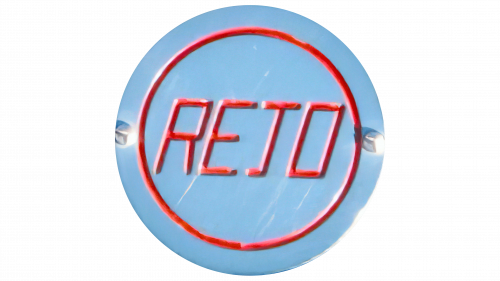The Rejo logo embodies a classic style, vibrant energy, and geometric precision—important qualities for a car manufacturer. It also conveys high speed, as the brand was founded by racers passionate about motorsports.
Rejo: Brand overview
1959 marked the start of Rejo’s history in the UK. Ray Jones, an engineer and motorsport enthusiast, started the company, and his name inspired the logo (RE stands for Ray, JO for Jones).
Jones began his business by building race vehicles for Formula Junior events. In the late 1950s and early 1960s, this class gained popularity as a transition from karting to a more competitive racing series.
In 1959, the company’s first automobile was produced. It was a single-seat racing vehicle with a 997 cc Ford 105E engine and a tubular frame. Because it was dependable and could be modified, this engine was well-liked by Formula Junior builders.
The brand quickly established itself as a competitive, high-quality racing vehicle manufacturer. Their cars were well-liked by private racers because of their reputation for lightweight design and excellent handling.
A refined version of their automobile debuted in 1960. The new model’s upgraded suspension and more aerodynamic body boosted performance on the track.
1961 was the company’s most prosperous year. The brand’s vehicles frequently placed highly in Formula Junior competitions throughout the United Kingdom. This accomplishment increased demand for their products and increased recognition for the brand.
However, the success was fleeting. In 1962, Formula Junior started to lose its appeal, making way for other racing classes. As a result of this shift, small manufacturers who specialized in this series faced challenges.
Jones started developing a new car for Formula 3, which was becoming increasingly popular, to adjust to these changes. Unfortunately, this project was not feasible due to budgetary constraints and escalating competition from larger producers.
By the end of 1962, the company ceased to manufacture racing cars. In the brief time it was in business, about 20 race cars were produced and used in competitions throughout Europe and the UK.
Despite its short existence, the brand established its mark in motorsports. Thanks to its engineering talent and racing passion, the firm became an example of a small but inventive manufacturer that could compete with larger organizations.
Meaning and History
What is Rejo?
This small Dutch automaker is best known for its racing and sports cars. The company specializes in producing lightweight, high-performance vehicles primarily for motorsport use. The car’s low weight and agile handling were largely due to their fiberglass bodies and tubular space frame chassis. The brand gained recognition on many racetracks, especially in local championships and hill climb events. Typically, the cars were equipped with engines from larger manufacturers, tuned for maximum performance.
1959 – 1962
Although the company Rejo was short-lived and little-known, it made a mark in racing history as a manufacturer of powerful sports cars with elegant designs. Its logo may not be considered progressive now, but it was attractive enough to represent an automotive brand then.
The word “Rejo” is at the center, rendered in a thin, sans-serif font. These are the initials of Rod Easterling and Jim Osborn, two racers who built their cars. The emblem immortalized these two remarkable individuals’ names and showcased their competitive spirit and passionate love for speed. These qualities are reflected in the design of the inscription:
- The red color conveys the intense emotions of racing.
- The tall italic letters create a sense of movement.
The brand name is placed within a large silver circle with a gradient and outlined with a red ring. The emblem’s metallic texture indicates Rejo’s connection to the automotive industry, while the circular shape is associated with a wheel or steering wheel.





